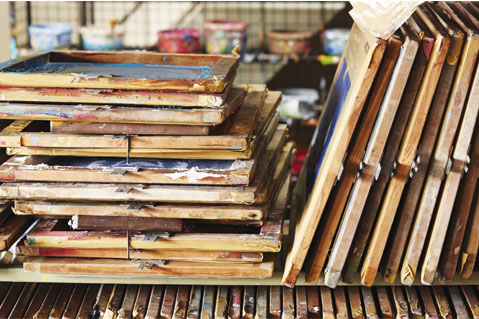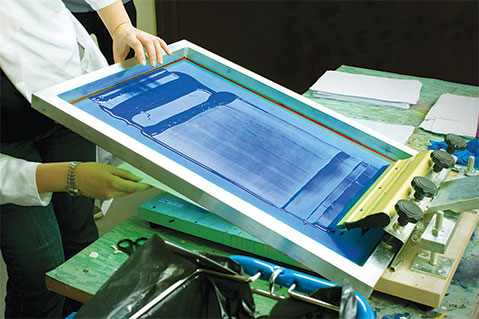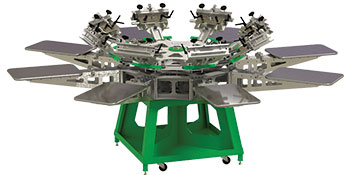Strategy May 22, 2017
Wood vs. Aluminum Screen Frames
Newer wooden screen-printing frames offer reliability over yesterday’s models; for some jobs, newer tube-style aluminum frames may prove your best option.
Stephen Toth knows screen printing; in fact, it’s in his blood. The 30-year veteran screen printer based in Allentown, PA, first began his life’s work as a middle-school student in his parents’ basement.

Wood provides an easier frame to handle and repair in the shop.
He houses all kinds of screens in his shop, Physical Graffittees. His favorite: Toth says he had to request permission from Led Zeppelin to use an alteration of one of their album titles for his business (they said yes). While Toth understands progress, wooden screens remain his tool of choice for churning out custom T-shirts and apparel for customers.
Here, Toth talks about some misconceptions regarding wooden screens, as well as why aluminum may or may not be the right choice, depending on the job to be done.
1. Wood warps. While this is true of conventional wooden screens, wood also provides an easier frame to handle and repair in the shop. Toth stretches screens that wear out or need to be replaced himself, rather than having them sent out for repairs or to be replaced, saving his shop time and money. “While we replace all our screen frames once a year, I save many of them,” Toth says. “I’ve had some for 10 years.”

Aluminum may be lighter in weight at the onset, but is still porous and can take on water during the screen-printing process.
2. All wood screens aren’t created equal. “I came across a manufacturer at a trade show in Atlantic City, that varnishes its wooden screens and fastens the corners with a tongue-and-groove joint,” Toth says. That means the screen frames take on less water during printing and cleaning and the joints don’t come apart.
3. Aluminum is lighter weight. Yes and no: Aluminum may be lighter in weight at the onset, but it’s still porous and can take on water during printing. “They can become heavy very quickly,” Toth says.
4. You’ll use wood and aluminum at different times. Toth prefers wood, but there are occasions when aluminum might be the right frame for the job. “A tubular aluminum screen on the market offers a lot of flexibility,” Toth says.
Product Pick
The new generation of Riley Hopkins Riley500 manual presses from Ryonet Corp. features improvements and additions to enhance its ease of use and durability in high-production settings. The CNC-constructed base now has a larger, 3” diameter post for added strength. The print station assembly is 25% lighter than the earlier version, while still supporting maximum press speeds. Registration also has been simplified and made faster for speedier setup with left and right anti-flip/anti-backlash ROQ xyz microregistration knobs. In addition, Riley500 presses now have a bearing-style versus a nylon bolt for easier locking into the registration gate. The Riley500 comes standard with heavy-duty back clamps or optional side clamps. It’s available in four-, six-, eight- and 10-color models, and is ideal for large-format applications. For more information, visit here.

